Industry

Industry

An industry is a sector that produces goods or related services within an economy.[1] The major source of revenue of a group or company is an indicator of what industry it should be classified in.[2] When a large corporate group has multiple sources of revenue generation, it is considered to be working in different industries. The manufacturing industry became a key sector of production and labour in European and North American countries during the Industrial Revolution, upsetting previous mercantile and feudal economies. This came through many successive rapid advances in technology, such as the development of steam power and the production of steel and coal.
Following the Industrial Revolution, possibly a third of the economic output came from manufacturing industries. Many developed countries and many developing/semi-developed countries (China, India etc.) depend significantly on manufacturing industry.
History
Slavery
Slavery, the practice of utilizing forced labor to produce goods[3] and services, has occurred since antiquity throughout the world as a means of low-cost production. It typically produces goods for which profit depends on economies of scale, especially those for which labor was simple and easy to supervise.[4] International law has declared slavery illegal.[5]
Guilds
Guilds, associations of artisans and merchants, oversee the production and distribution of a particular good. Guilds have their roots in the Roman Empire as collegia (singular: collegium) Membership in these early guilds was voluntary. The Roman collegia did not survive the fall of Rome.[6] In the early middle ages, guilds once again began to emerge in Europe, reaching a degree of maturity by the beginning of the 14th century.[7] While few guilds remain today, some modern labor structures resemble those of traditional guilds.[8] Other guilds, such as the SAG-AFTRA act as trade unions rather than as classical guilds. Professor Sheilagh Ogilvie claims that guilds negatively affected quality, skills, and innovation in areas that they were present.[9]
Industrial Revolution
Since the Industrial Revolution
Industrial development
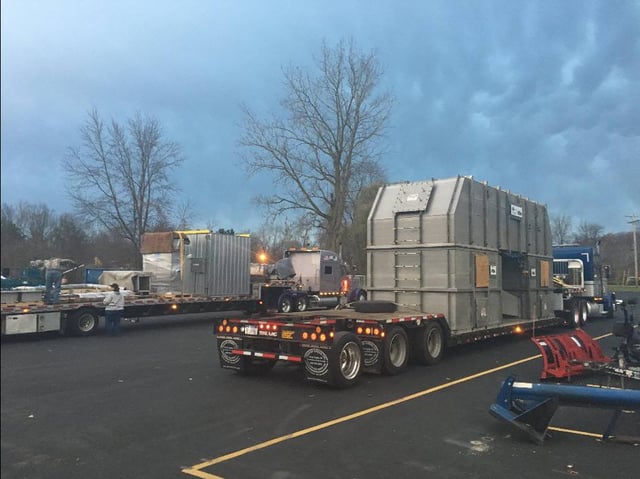
Optimized logistics have enabled the rapid development of industry. Here is a thermal oxidizer during the industrial shipping process.
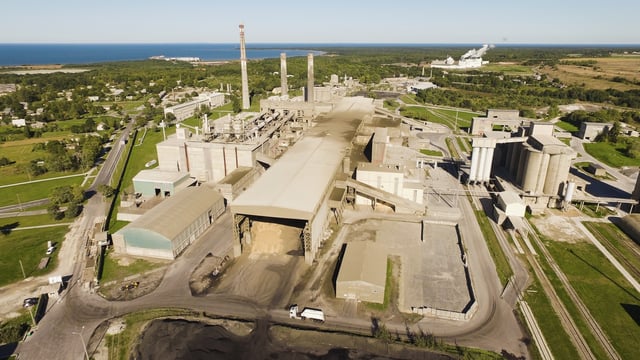
A factory, a traditional symbol of the industrial development (a cement factory in Kunda, Estonia)
The Industrial Revolution led to the development of factories for large-scale production with consequent changes in society.[12] Originally the factories were steam-powered, but later transitioned to electricity once an electrical grid was developed. The mechanized assembly line was introduced to assemble parts in a repeatable fashion, with individual workers performing specific steps during the process. This led to significant increases in efficiency, lowering the cost of the end process. Later automation was increasingly used to replace human operators. This process has accelerated with the development of the computer and the robot.
Deindustrialisation
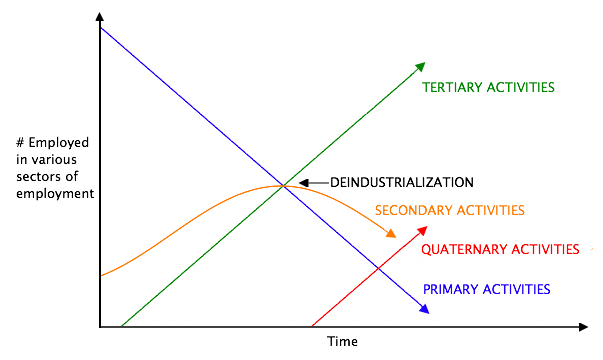
Colin Clark's sector model of an economy undergoing technological change. In later stages, the Quaternary sector of the economy grows.
Historically certain manufacturing industries have gone into a decline due to various economic factors, including the development of replacement technology or the loss of competitive advantage. An example of the former is the decline in carriage manufacturing when the automobile was mass-produced.
A recent trend has been the migration of prosperous, industrialized nations towards a post-industrial society. This is manifested by an increase in the service sector at the expense of manufacturing, and the development of an information-based economy, the so-called informational revolution. In a post-industrial society, manufacturers relocate to more profitable locations through a process of off-shoring.
Measurements of manufacturing industries outputs and economic effect are not historically stable. Traditionally, success has been measured in the number of jobs created. The reduced number of employees in the manufacturing sector has been assumed to result from a decline in the competitiveness of the sector, or the introduction of the lean manufacturing process.
Related to this change is the upgrading of the quality of the product being manufactured. While it is possible to produce a low-technology product with low-skill labour, the ability to manufacture high-technology products well is dependent on a highly skilled staff.
Society
An industrial society is a society driven by the use of technology to enable mass production, supporting a large population with a high capacity for division of labour. Today, industry is an important part of most societies and nations. A government must have some kind of industrial policy, regulating industrial placement, industrial pollution, financing and industrial labour.
Industrial labour
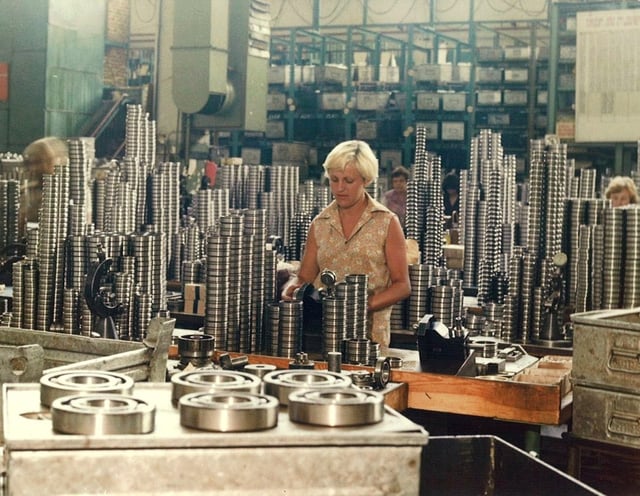
An industrial worker amidst heavy steel components (KINEX BEARINGS, Bytča, Slovakia, c. 1995–2000)
In an industrial society, industry employs a major part of the population. This occurs typically in the manufacturing sector. A labour union is an organization of workers who have banded together to achieve common goals in key areas such as wages, hours, and other working conditions. The trade union, through its leadership, bargains with the employer on behalf of union members (rank and file members) and negotiates labour contracts with employers. This movement first rose among industrial workers.
War
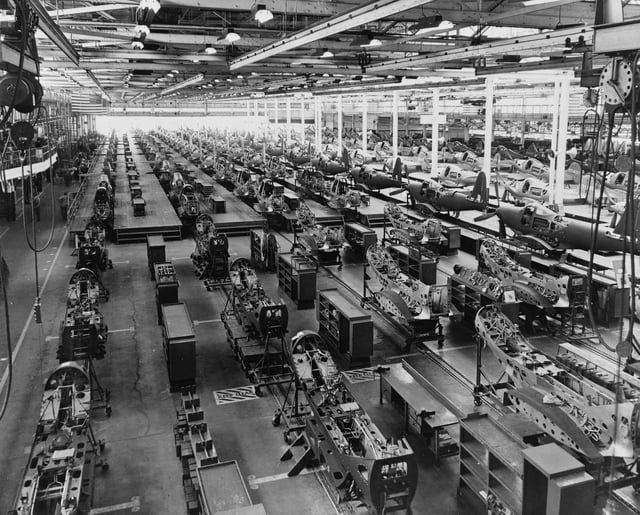
The assembly plant of the Bell Aircraft Corporation (Wheatfield, New York, United States, 1944) producing P-39 Airacobra fighters
The Industrial Revolution changed warfare, with mass-produced weaponry and supplies, machine-powered transportation, mobilization, the total war concept and weapons of mass destruction. Early instances of industrial warfare were the Crimean War and the American Civil War, but its full potential showed during the world wars. See also military-industrial complex, arms industries, military industry and modern warfare.
List of countries by industrial output
See also
Industry information
North American Industry Classification System
North American Product Classification System
Outline of industry
Standard Industrial Classification